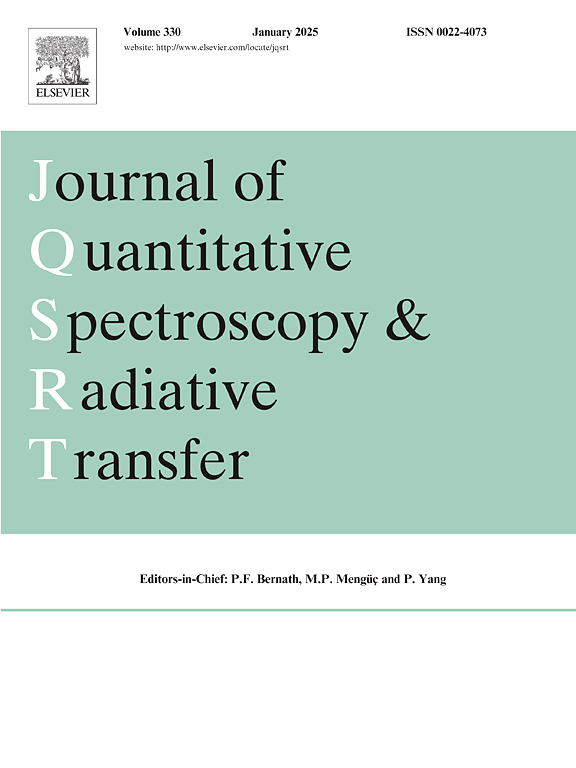用于线形计算的高效 Voigt 程序
IF 2.3
3区 物理与天体物理
Q2 OPTICS
Journal of Quantitative Spectroscopy & Radiative Transfer
Pub Date : 2024-10-30
DOI:10.1016/j.jqsrt.2024.109234
引用次数: 0
摘要
沃伊特函数是洛伦兹曲线和高斯曲线的卷积,对光谱学、大气科学和天体物理学等多个领域都至关重要。该函数的高效计算至关重要,尤其是在函数可能被大量调用的应用中。在本文中,我们介绍了一种高效的新型算法及其 Fortran90 实现方法,用于实际评估 Voigt 函数,精度达到 10-6 的数量级。该算法采用基于切比雪夫子区间多项式近似的改进拟合,用于两变量函数。就计算速度而言,该算法明显优于文献中广泛使用的竞争算法,因此非常适合实时应用和大规模数据处理任务。效率的大幅提高使本算法和计算机代码成为相关科学领域的重要工具。该算法已被巴黎天文台的 Meudon PDR 代码所采用和实施,推荐用于类似的应用和模拟软件包。本文章由计算机程序翻译,如有差异,请以英文原文为准。
A highly efficient Voigt program for line profile computation
Evaluation of the Voigt function, a convolution of a Lorentzian and a Gaussian profile, is essential in various fields such as spectroscopy, atmospheric science, and astrophysics. Efficient computation of the function is crucial, especially in applications where the function may be called for an enormous number of times. In this paper, we present a highly efficient novel algorithm and its Fortran90 implementation for the practical evaluation of the Voigt function with accuracy in the order of . The algorithm uses improved fits based on Chebyshev subinterval polynomial approximation for functions in two variables. The algorithm significantly outperforms widely-used competitive algorithms in the literature, in terms of computational speed, making it highly suitable for real-time applications and large-scale data processing tasks. The substantial improvement in efficiency positions the present algorithm and computer code as a valuable tool in relevant scientific domains. The algorithm has been adopted and implemented in the Meudon PDR code at Paris Observatory and is recommended for similar applications and simulation packages.
求助全文
通过发布文献求助,成功后即可免费获取论文全文。
去求助
来源期刊
CiteScore
5.30
自引率
21.70%
发文量
273
审稿时长
58 days
期刊介绍:
Papers with the following subject areas are suitable for publication in the Journal of Quantitative Spectroscopy and Radiative Transfer:
- Theoretical and experimental aspects of the spectra of atoms, molecules, ions, and plasmas.
- Spectral lineshape studies including models and computational algorithms.
- Atmospheric spectroscopy.
- Theoretical and experimental aspects of light scattering.
- Application of light scattering in particle characterization and remote sensing.
- Application of light scattering in biological sciences and medicine.
- Radiative transfer in absorbing, emitting, and scattering media.
- Radiative transfer in stochastic media.

 求助内容:
求助内容: 应助结果提醒方式:
应助结果提醒方式:


